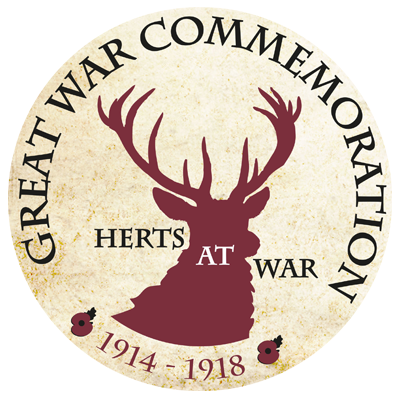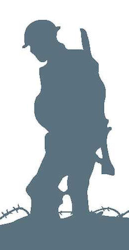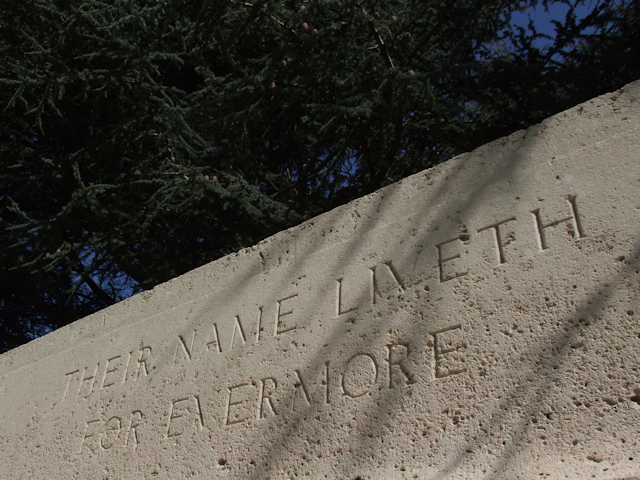Wartime Service
Frank enlisted as a Territorial Soldier in the Hertfordshire Regiment around Feb 1914 as Private 2321. No Service Record was found. At the outbreak of the Great War the 1st/1st Battalion was mobilised and those soldiers who had volunteered for Foreign Service went to France on 6 Nov 1914 to become a Unit of 4th (Guards) Brigade, 2nd Division in the Ypres Sector. Frank was wounded at some time and evacuated back to UK. He transferred to Heavy Section, Machine Gun Corps that is Tanks and when this became the Tank Corps on 27 Jul 1917 was posted to A Company, 17th Battalion which was originally being equipped to be a Tank Battalion but in an emergency became an Armoured Car Unit operating Austin Armoured Cars.
The following extract is taken from Tanks in the Great War 1914-1918 by Brevet-Colonel J. F. C. FULLER, D.S.O. (Oxfordshire and Buckinghamshire Light Infantry) 1920. It leads up to an action on the 11th June 1918 (the date of Private Robinson’s death) in which the 17th Battalion was in action with French forces attempting to stem the German Spring Offensive:
“In March 1918 the 17th Tank Battalion was in process of formation at the Tank Training Centre at Wool, when the German spring offensive resulted in so great a demand being made on the home resources that it was converted into an Armoured Car Battalion on April 23. On the following day the drivers were selected, and sixteen armoured cars, which were earmarked for the eastern theatre of war, were handed over to it, the Vickers machine guns being replaced by Hotchkiss ones.
On April 28 the cars were embarked at Portsmouth, and on the 29th the personnel, under the command of Lieutenant-Colonel E. J. Carter, left Folkestone for Boulogne. Thus in six days the whole battalion was formed, equipped, and landed in France.
Immediately on landing the 17th Battalion was attached to the Second Army and ordered to proceed to Poperinghe, but the tactical situation improving these orders were cancelled and it was first sent to the Tank Gunnery School at Merhmont for instruction, and later on to the Tank Depot at Mers.
After some ten days’ training the 17th Battalion joined the Fourth Army and went into the line at La Hussoye, being attached to the Australian Corps. A few days later the battalion was transferred to the XXIInd Corps, which was then resting in G.H.Q. reserve, immediately behind the right flank of the British Army, and battalion headquarters were established at Pissy. Here training continued until June 10, when at 9.30 a.m. instructions were received by Lieutenant-Colonel Carter to report to the headquarters of the First French Army at Conty.
At Conty orders were issued for the battalion to proceed to Ravenel near St. Just. The battalion was notified of this by telephone, and, although the night was very dark and wet and the roads crowded with traffic, it reached Ravenel by 5 a.m. on June 11, after a sixty-mile journey, and went into action with the Tenth French Army in its counter-attack at Belloy on that day. In this battle two sections of armoured cars engaged the enemy with machine-gun fire, but the quantity of debris scattered on the roads, and the fragile nature of the chassis of the cars, prevented their being freely used. On the conclusion of these operations the battalion returned to the XXIInd Corps.”
The page from the Commanding Officer’s Report in the Battalion War Diary [Note] for the 11th June 1918 is missing, but its final sentences appears at the top of the page covering the following day’s activities. They read: “The Companies eventually rallied at VAUMONT and parked for the night, with the exception of one car on the TRICOT-COURCELLES road which was hit by Shell fire. This car was recovered next day. Casualties, 1 Gunner killed, 1 driver slightly wounded.”
The 17th Battalion lost one man on the 11th June, and although he is not named it follows that this was Private Robinson.
From the Parish Magazine October 1918: “Frank Robinson joined The Herts Territorials in February of 1914, and was among those camping in Ashridge Park. Just before the war began at the commencement of hostilities his regiment was mobilised and he was in France by November 1914. He was invalidated home, but returned to the front later on, and was attached to the tanks, and killed in action on June 11th 1918 and buried in a cemetery about eight miles behind the line. His Lieutenant, writing to his parents, says ‘I had only known your son for seven weeks, but I found him to be cool, cheerful and very popular among his comrades. He had just been recommended for promotion and would have risen rapidly. He leaves a gap in the ranks which is hard to replace and I had come to rely on him, and never found my trust misplace.’ He was evidently, as another officer, says ‘a very gallant soldier’”.



